Solar eclipse of November 25, 2030
A total solar eclipse will occur on Monday, November 25, 2030. A solar eclipse occurs when the Moon passes between Earth and the Sun, thereby totally or partly obscuring the image of the Sun for a viewer on Earth. A total solar eclipse occurs when the Moon's apparent diameter is larger than the Sun's, blocking all direct sunlight, turning day into darkness. Totality occurs in a narrow path across Earth's surface, with the partial solar eclipse visible over a surrounding region thousands of kilometres wide.
| Solar eclipse of November 25, 2030 | |
|---|---|
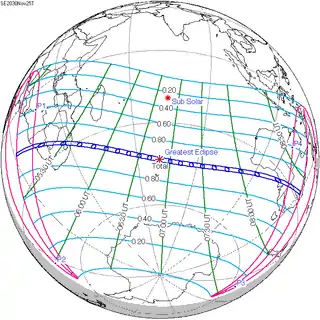 Map | |
| Type of eclipse | |
| Nature | Total |
| Gamma | −0.3867 |
| Magnitude | 1.0468 |
| Maximum eclipse | |
| Duration | 224 sec (3 m 44 s) |
| Coordinates | 43.6°S 71.2°E |
| Max. width of band | 169 km (105 mi) |
| Times (UTC) | |
| Greatest eclipse | 6:51:37 |
| References | |
| Saros | 133 (46 of 72) |
| Catalog # (SE5000) | 9576 |
Images
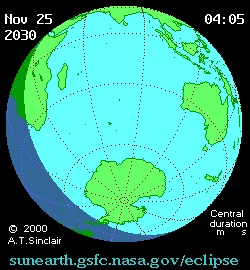
Animated path
Related eclipses
Solar eclipses 2029–2032
This eclipse is a member of a semester series. An eclipse in a semester series of solar eclipses repeats approximately every 177 days and 4 hours (a semester) at alternating nodes of the Moon's orbit.[1]
Note: Partial solar eclipses on January 14, 2029 and July 11, 2029 occur on the previous lunar year eclipse set.
| Solar eclipse series sets from 2029–2032 | ||||
|---|---|---|---|---|
| Descending node | Ascending node | |||
| 118 | June 12, 2029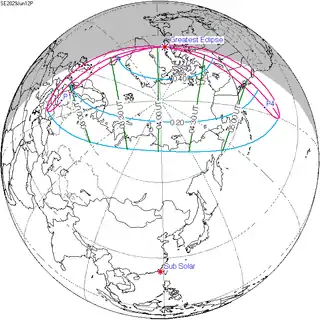 Partial |
123 | December 5, 2029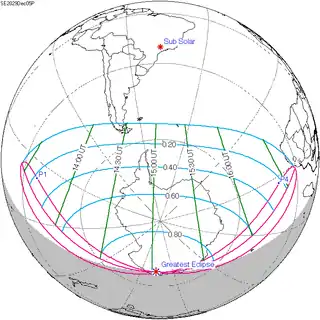 Partial | |
| 128 | June 1, 2030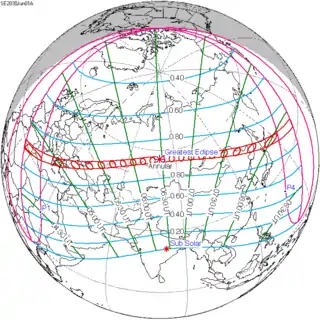 Annular |
133 | November 25, 2030 Total | |
| 138 | May 21, 2031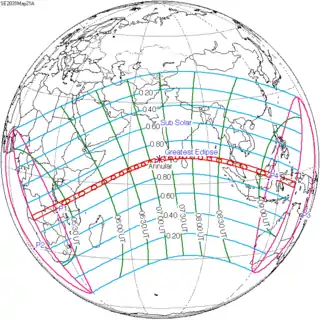 Annular |
143 | November 14, 2031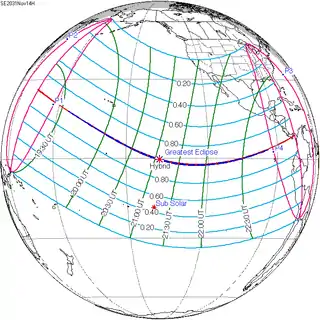 Hybrid | |
| 148 | May 9, 2032 Annular |
153 | November 3, 2032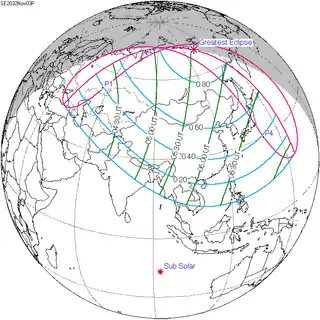 Partial | |
Saros 133
Solar Saros 133, repeating every 18 years, 11 days, contains 72 events. The series started with a partial solar eclipse on July 13, 1219. It contains annular eclipses from November 20, 1435, through January 13, 1526, with a hybrid eclipse on January 24, 1544. It has total eclipses from February 3, 1562, through June 21, 2373. The series ends at member 72 as a partial eclipse on September 5, 2499. The longest duration of totality was 6 minutes, 49.97 seconds on August 7, 1850.[2] The total eclipses of this saros series are getting shorter and farther south with each iteration. All eclipses in this series occurs at the Moon’s ascending node.
| Series members 30–56 occur between 1742 and 2211 | ||
|---|---|---|
| 30 | 31 | 32 |
| June 3, 1742 | June 13, 1760 | 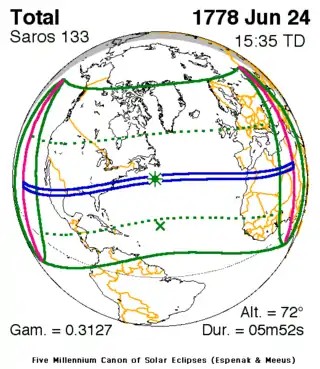 June 24, 1778 |
| 33 | 34 | 35 |
| July 4, 1796 | July 17, 1814 | July 27, 1832 |
| 36 | 37 | 38 |
| August 7, 1850 | 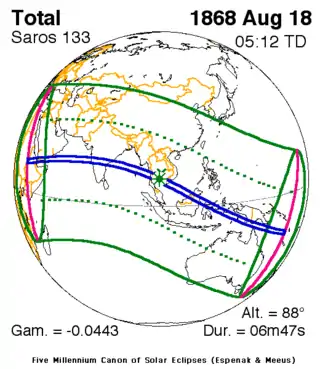 August 18, 1868 |
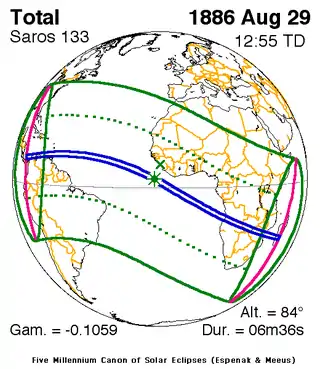 August 29, 1886 |
| 39 | 40 | 41 |
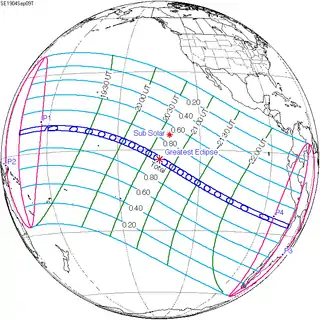 September 9, 1904 |
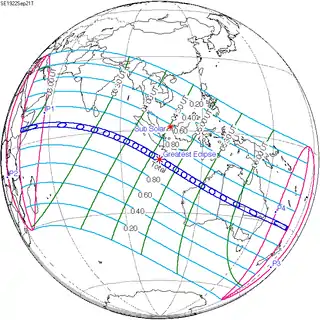 September 21, 1922 |
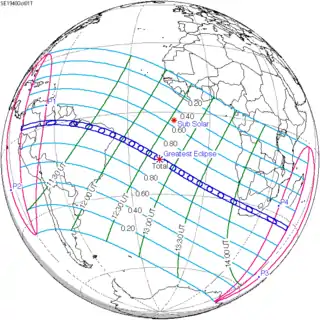 October 1, 1940 |
| 42 | 43 | 44 |
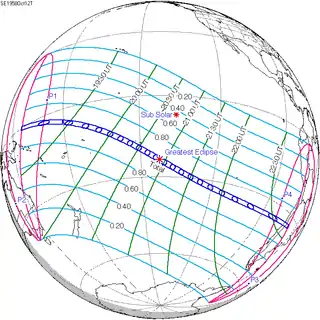 October 12, 1958 |
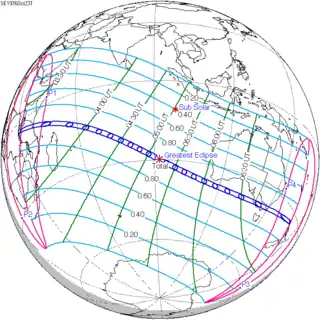 October 23, 1976 |
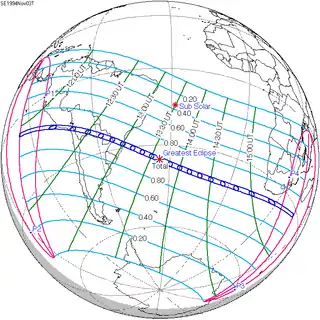 November 3, 1994 |
| 45 | 46 | 47 |
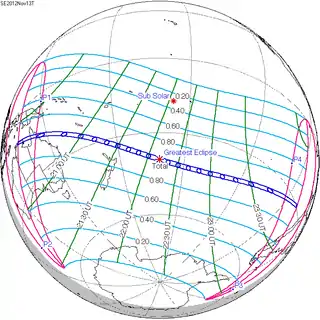 November 13, 2012 |
 November 25, 2030 |
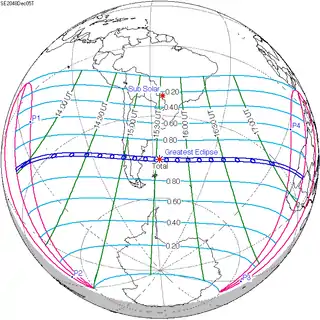 December 5, 2048 |
| 48 | 49 | 50 |
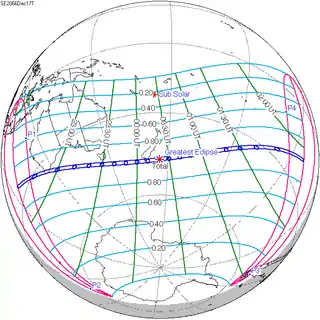 December 17, 2066 |
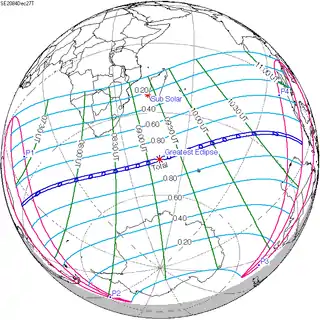 December 27, 2084 |
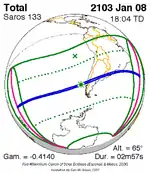 January 8, 2103 |
| 51 | 52 | 53 |
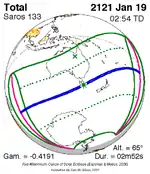 January 19, 2121 |
 January 30, 2139 |
 February 9, 2157 |
| 54 | 55 | 56 |
 February 21, 2175 |
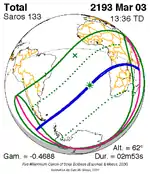 March 3, 2193 |
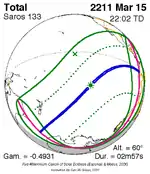 March 15, 2211 |
Metonic series
The metonic series repeats eclipses every 19 years (6939.69 days), lasting about 5 cycles. Eclipses occur in nearly the same calendar date. In addition, the octon subseries repeats 1/5 of that or every 3.8 years (1387.94 days). All eclipses in this table occur at the Moon's ascending node.
| 21 eclipse events, progressing from south to north between July 1, 2000 and July 1, 2076 | ||||
|---|---|---|---|---|
| July 1–2 | April 19–20 | February 5–7 | November 24–25 | September 12–13 |
| 117 | 119 | 121 | 123 | 125 |
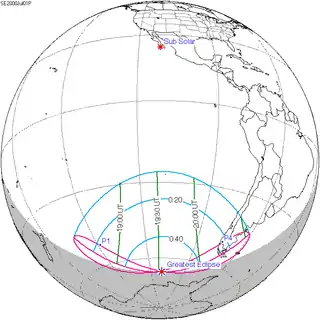 July 1, 2000 |
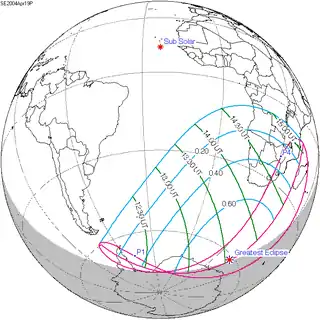 April 19, 2004 |
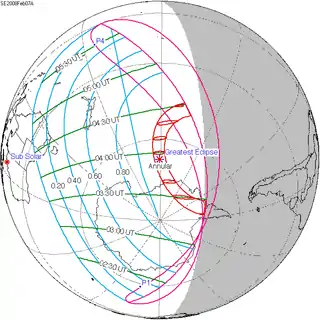 February 7, 2008 |
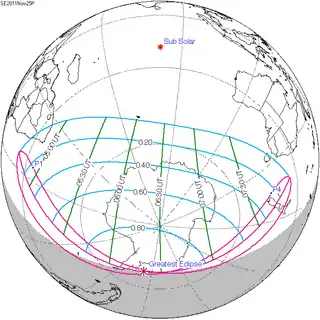 November 25, 2011 |
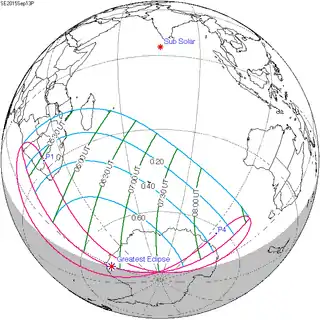 September 13, 2015 |
| 127 | 129 | 131 | 133 | 135 |
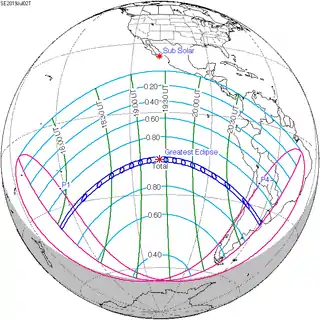 July 2, 2019 |
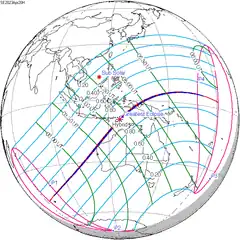 April 20, 2023 |
 February 6, 2027 |
 November 25, 2030 |
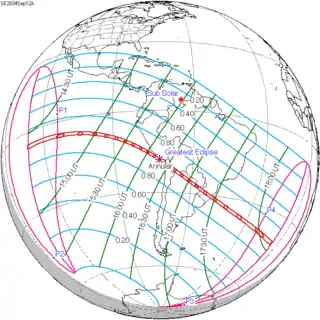 September 12, 2034 |
| 137 | 139 | 141 | 143 | 145 |
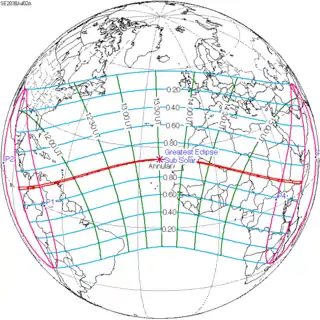 July 2, 2038 |
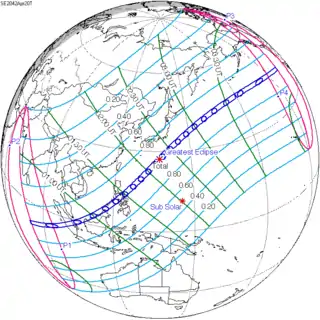 April 20, 2042 |
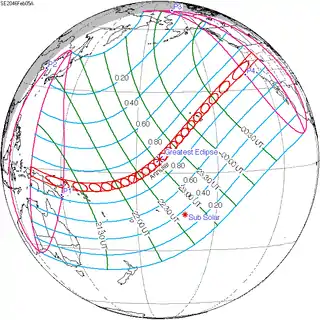 February 5, 2046 |
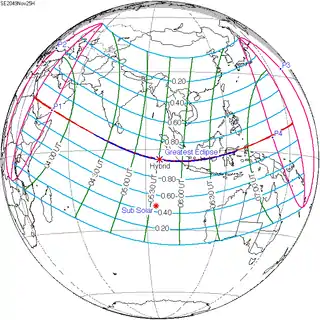 November 25, 2049 |
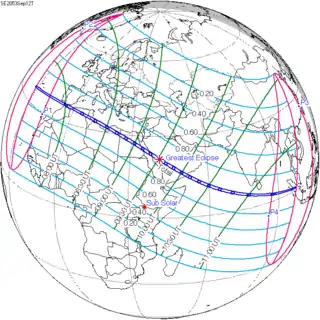 September 12, 2053 |
| 147 | 149 | 151 | 153 | 155 |
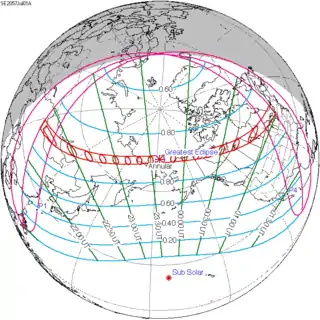 July 1, 2057 |
 April 20, 2061 |
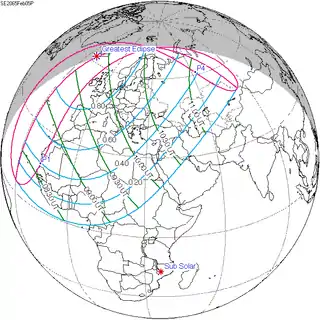 February 5, 2065 |
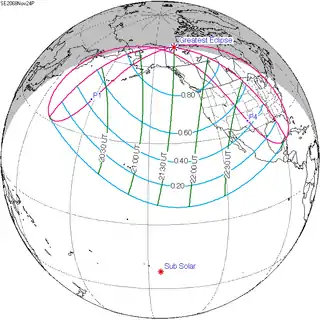 November 24, 2068 |
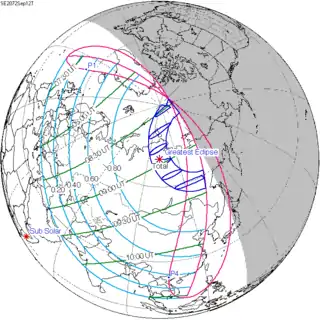 September 12, 2072 |
| 157 | 159 | 161 | 163 | 165 |
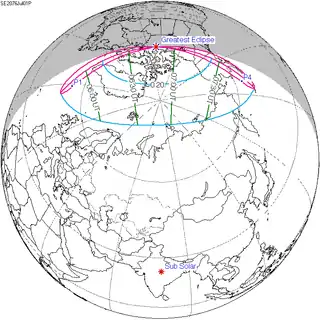 July 1, 2076 |
||||
References
- van Gent, R.H. "Solar- and Lunar-Eclipse Predictions from Antiquity to the Present". A Catalogue of Eclipse Cycles. Utrecht University. Retrieved 6 October 2018.
- http://eclipse.gsfc.nasa.gov/SEsaros/SEsaros133.html
External links
- Earth visibility chart and eclipse statistics Eclipse Predictions by Fred Espenak, NASA/GSFC
.jpg.webp)

